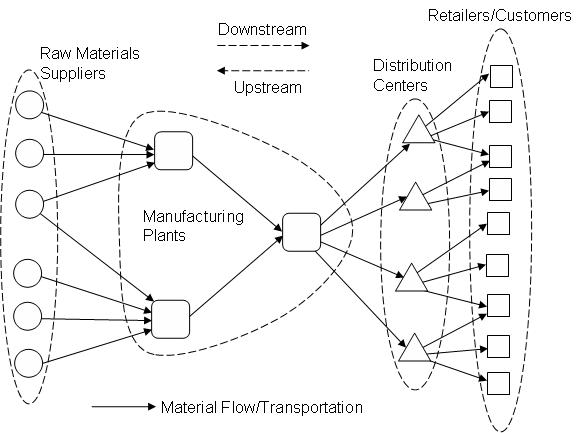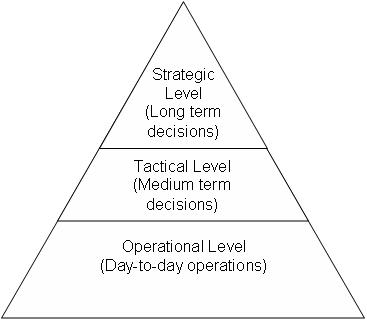
Difference: SupplyChains (8 vs. 9)
Revision 92009-10-06 - MichaelOSullivan
| Line: 1 to 1 | ||||||||
|---|---|---|---|---|---|---|---|---|
Supply Chains | ||||||||
| Line: 11 to 11 | ||||||||
Introduction | ||||||||
| Changed: | ||||||||
| < < | Ganesh and Harrison Ram Ganeshan and Terry P. Harrison. An Introduction to Supply Chain Management. Penn State University | |||||||
| > > | Ganesh and Harrison (Ram Ganeshan and Terry P. Harrison. An Introduction to Supply Chain Management. Penn State University | |||||||
| A supply chain is a network of facilities and distribution options that performs the functions of procurement of materials, transformation of these materials into intermediate and finished products, and the distribution of these finished products to customers. | ||||||||
| Line: 19 to 19 | ||||||||
|
Figure 1 An example of a supply chain (adapted from Supply Chain Management | ||||||||
| Changed: | ||||||||
| < < |  | |||||||
| > > |  | |||||||
| Return to top | ||||||||
| Line: 27 to 27 | ||||||||
There are 3 types of decisions made in a supply chain, shown in Figure 2. As Figure 2 shows there is a hierarchy inherent in these decisions and the upper level decisions (at the top of the pyramid) directly affect the lower level decisions, for example
| ||||||||
| Changed: | ||||||||
| < < |
| |||||||
| > > |
| |||||||
|
Figure 2 Hierarchy of Supply Chain Decisions (adapted from Supply Chain Management | ||||||||
| Changed: | ||||||||
| < < |  | |||||||
| > > |  | |||||||
| Return to top | ||||||||
View topic | History: r9 < r8 < r7 < r6 | More topic actions...
Ideas, requests, problems regarding TWiki? Send feedback